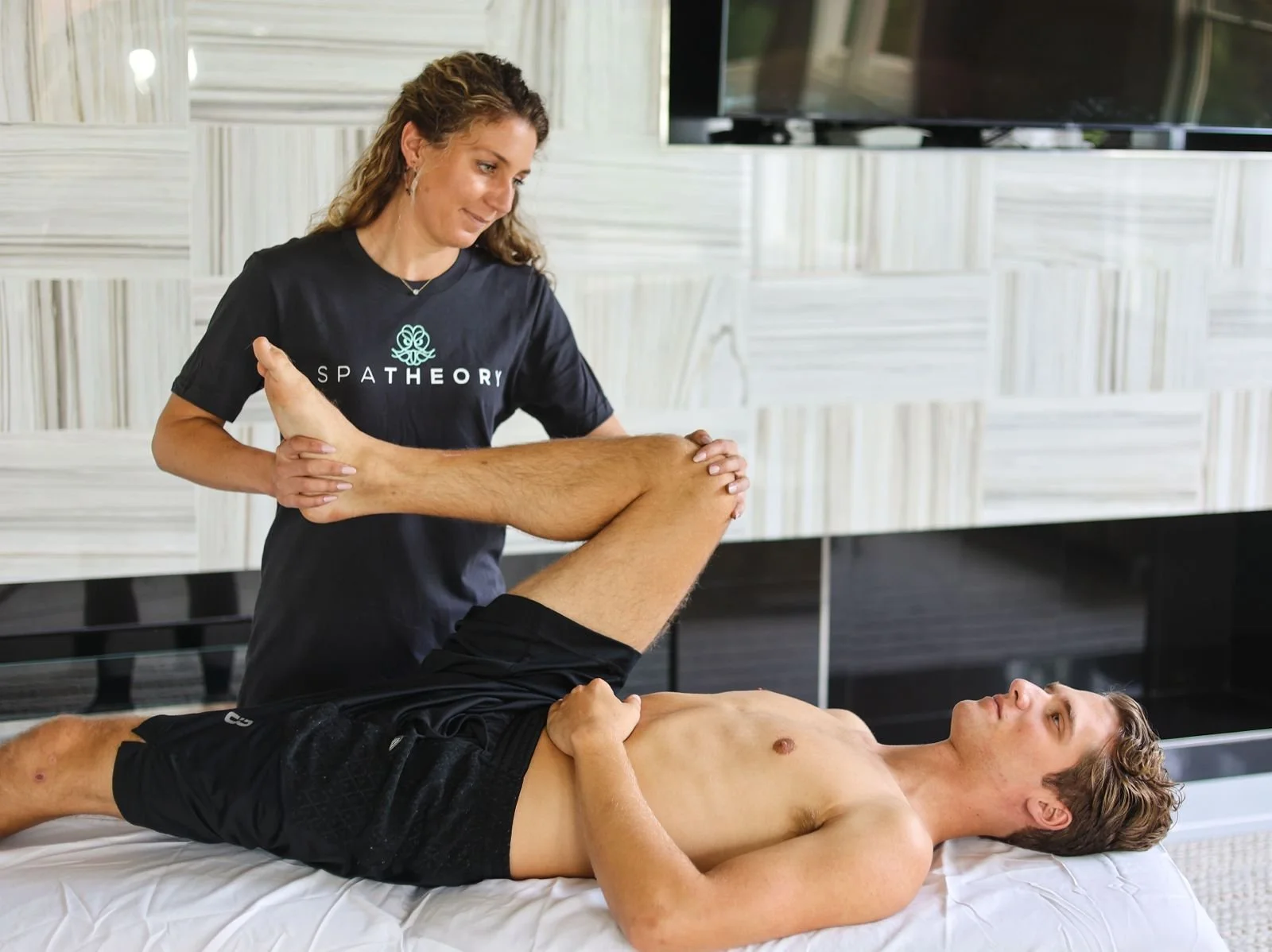The Best Stretches for Lower Back Pain & How Massage Therapy Can Help
Lower back pain is a common issue affecting millions of people, often due to prolonged sitting, poor posture, or muscle tension. While stretches for lower back pain can provide relief, combining them with other recovery techniques can enhance flexibility and long-term back health.
This article explores effective lower back stretches and how incorporating muscle relaxation techniques can further aid recovery.
Why Stretches for Lower Back Pain Work
Stretching helps to:
✅ Reduce muscle stiffness that contributes to pain
✅ Improve flexibility in the lower back and hips
✅ Enhance circulation, which speeds up muscle recovery
✅ Prevent injuries and chronic pain
While stretching is a great first step, some people find that additional muscle therapy, such as Deep Tissue Massage, provides longer-lasting relief by targeting deeper muscle layers.
Now, let’s explore some key stretches for lower back pain and how they can be supported by muscle relaxation techniques.
5 Effective Stretches for Lower Back Pain
1. Child’s Pose
🔹 How to Do It:
Kneel on the floor with toes touching and sit back on your heels.
Extend your arms forward, lowering your chest toward the floor.
Hold for 30–60 seconds while taking deep breaths.
🔹 Why It Helps:
Gently stretches the lower back and hips
Encourages relaxation and flexibility
If lower back tension persists, deeper muscle work may be helpful in relieving tightness that stretching alone can't fully release.
2. Cat-Cow Stretch
🔹 How to Do It:
Get on all fours, hands under shoulders, knees under hips.
Inhale, arch your back, and lift your head (Cow Pose).
Exhale, round your spine and tuck your chin (Cat Pose).
Repeat 10 times with slow, controlled breathing.
🔹 Why It Helps:
Promotes spinal mobility
Helps loosen stiff lower back muscles
Supporting movements like this with proper muscle relaxation techniques can be beneficial in addressing deep-seated muscle tension.
3. Knee-to-Chest Stretch
🔹 How to Do It:
Lie on your back with knees bent and feet flat on the floor.
Bring one knee toward your chest, holding it with both hands.
Hold for 20–30 seconds, then switch sides.
🔹 Why It Helps:
Gently releases tight lower back muscles
Helps decompress the spine
This stretch is often more effective when muscles are properly relaxed, making techniques like Hot Stone Massage useful for improving overall comfort.
4. Seated Spinal Twist
🔹 How to Do It:
Sit on the floor with legs extended.
Bend one knee and cross it over the opposite leg.
Place the opposite elbow on the bent knee and twist your torso.
Hold for 30 seconds, then switch sides.
🔹 Why It Helps:
Enhances spinal flexibility
Alleviates lower back tightness
Mobility work can be supported by muscle release techniques that help improve flexibility and range of motion.
5. Standing Hamstring Stretch
🔹 How to Do It:
Stand with feet hip-width apart.
Slowly bend forward, reaching for your toes while keeping legs straight.
Hold for 20–30 seconds, then return to standing.
🔹 Why It Helps:
Loosens up the lower back and hamstrings
Helps reduce strain on the spine
Since tight hamstrings can often contribute to lower back pain, gentle muscle relaxation methods may help improve mobility over time
How Muscle Therapy Supports Lower Back Recovery
While stretching helps maintain flexibility, muscle relaxation techniques can complement recovery by:
1. Improving Circulation
Encouraging blood flow to tense muscles can speed up healing and reduce stiffness.
2. Breaking Up Muscle Tension
Deeper techniques can help address chronic tightness, especially in areas that stretching alone may not fully release.
3. Supporting Relaxation & Sleep
Poor sleep can contribute to muscle tightness and discomfort. Some find that Sleep Massage helps with relaxation, allowing muscles to recover more effectively.
4. Enhancing Flexibility & Mobility
Incorporating recovery-focused methods alongside stretching can improve long-term movement and reduce pain.
Frequently Asked Questions (FAQs)
1. How often should I do these stretches?
Daily stretching or at least 3-4 times per week is ideal for maintaining flexibility and preventing stiffness.
2. Can stretching alone relieve my lower back pain?
Stretching is helpful, but for deeper relief, combining it with proper muscle relaxation can be more effective.
3. Which recovery techniques work best for lower back pain?
The right method depends on your individual needs:
Deep Tissue Massage – Focuses on chronic tension and muscle tightness.
Hot Stone Massage – Helps with deep relaxation and pain relief.
Sleep Massage – Supports relaxation and recovery.
4. How long does it take to feel improvement?
Many people notice immediate relief, but long-term improvement requires consistency in stretching and muscle recovery practices.
5. Can recovery techniques help prevent future back pain?
Yes! Regular stretching and targeted muscle recovery methods help maintain spinal health, improve posture, and reduce the risk of future injuries.
Your Path to Long-Term Back Health
Lower back pain doesn’t have to be a daily struggle. By incorporating stretches for lower back pain and supporting your muscles with proper recovery methods, you can experience long-term relief and improved flexibility. If stretching alone isn’t enough, additional muscle recovery techniques can help provide deeper relief and support better movement. Taking care of your lower back now can prevent bigger issues later, allowing you to stay active and pain-free.
✅ Ready to reduce lower back pain naturally?
🔗 Book a massage today and start your wellness journey!

